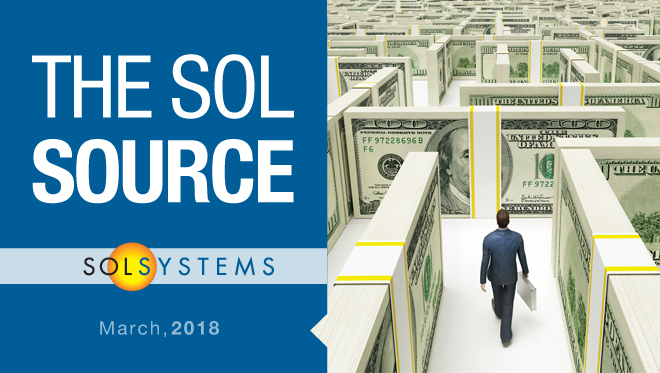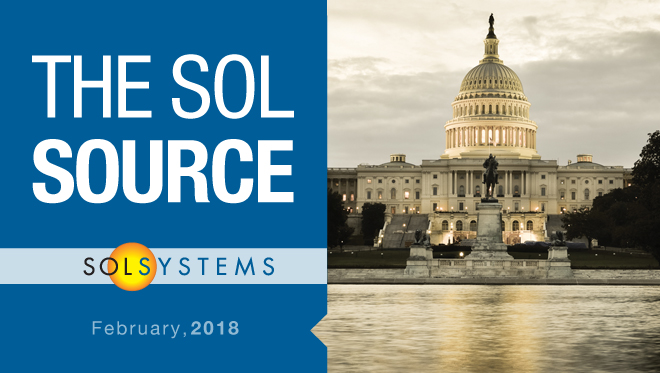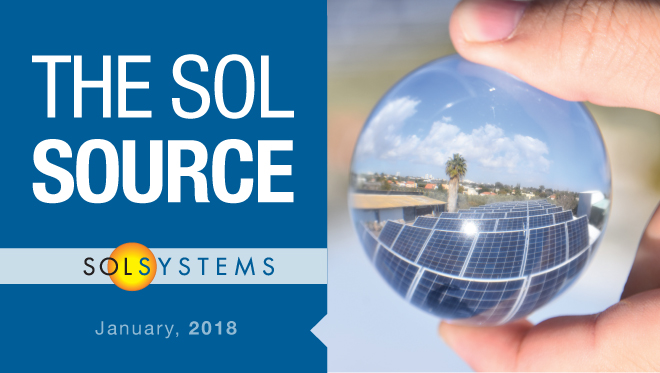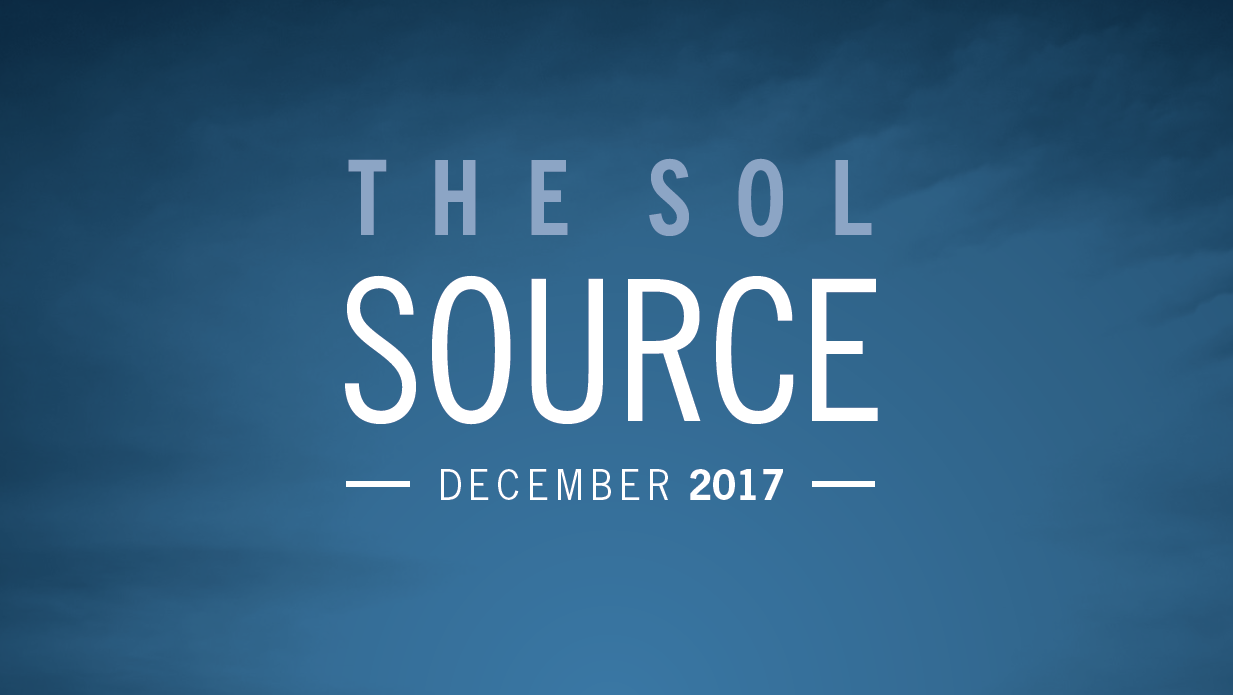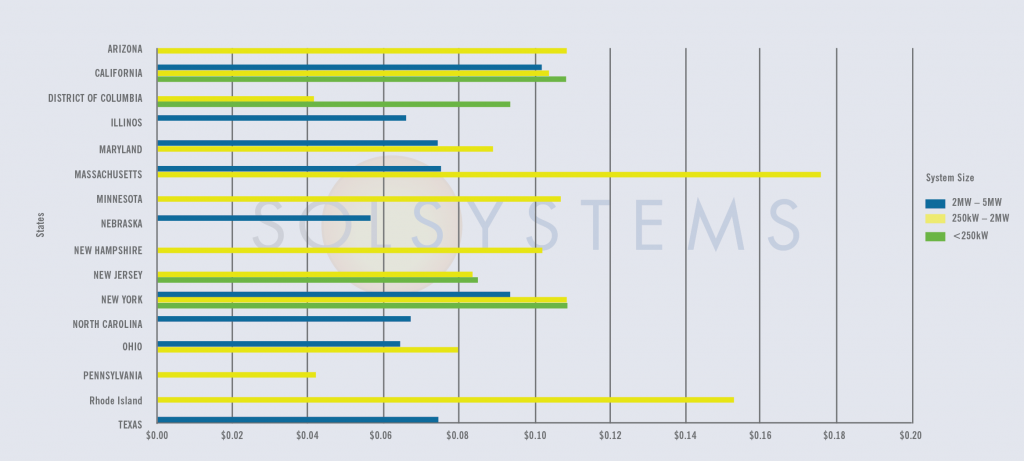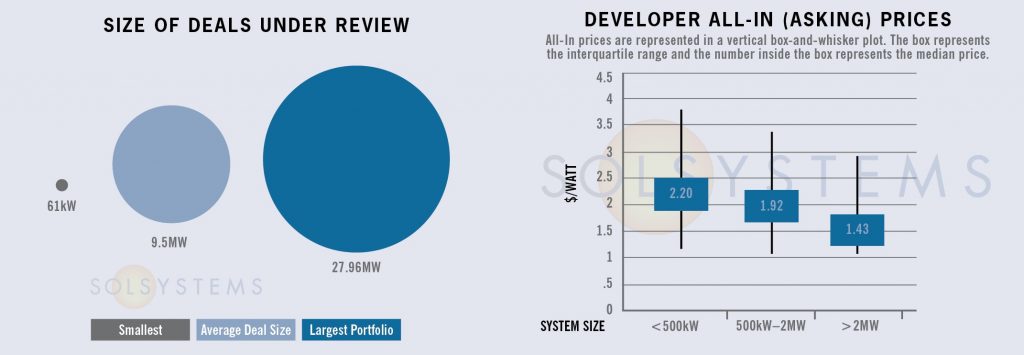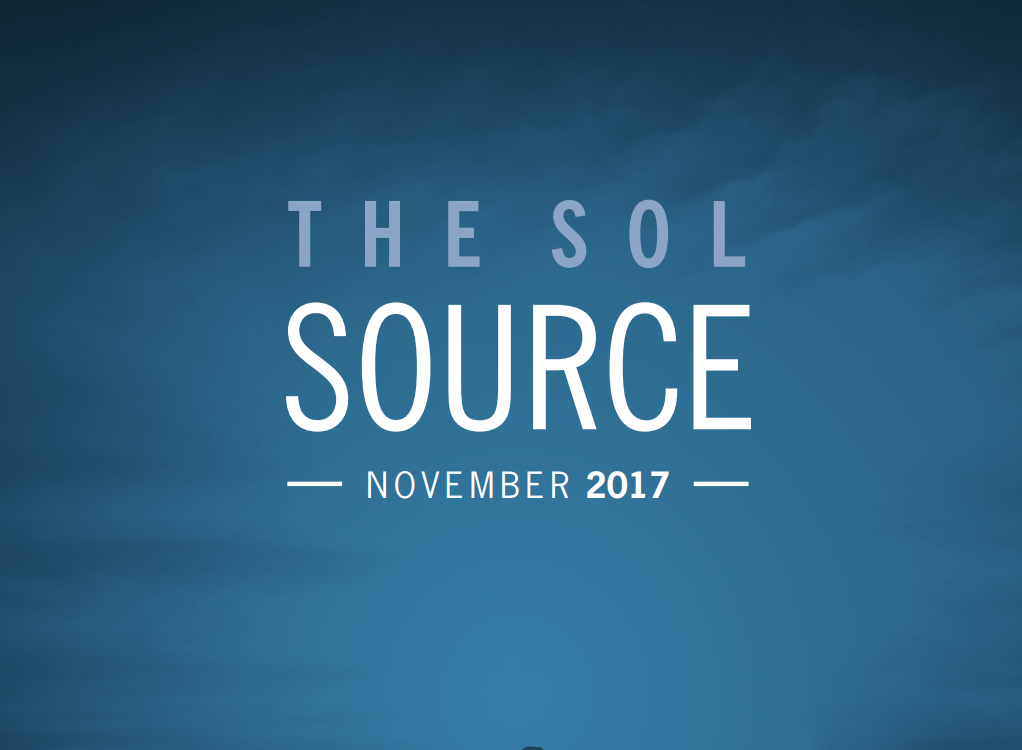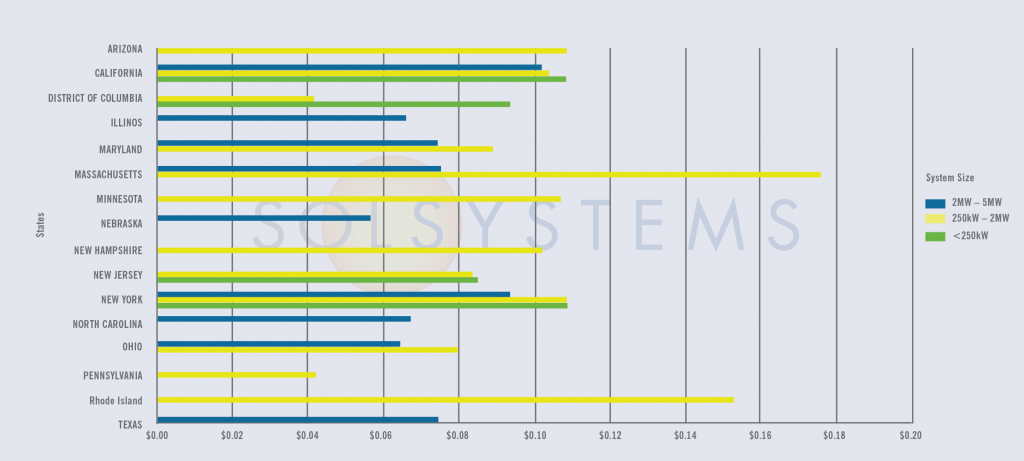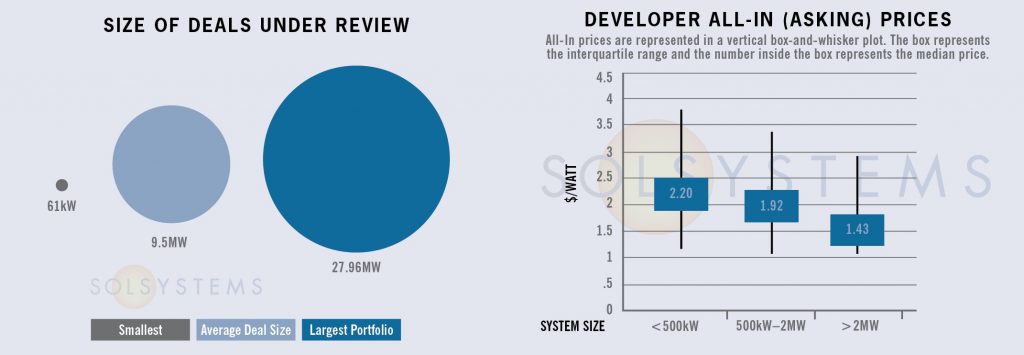The Sol SOURCE is a monthly journal that our team distributes to our network of clients and solar stakeholders. Our newsletter contains trends and observations gained through monthly interviews with our team, and it incorporates news from a variety of industry resources.
Below, we have included excerpts from the March 2018 edition. To receive future Journals, please subscribe or email SOURCE@solsystems.com.
STATE MARKETS
Massachusetts – Massachusetts, is the number six state for solar development according to the most recent GTM and SEIA report. However, the state continues to experience unique challenges for a few reasons. First, interconnection remains a challenge for most developers because the SMART program will have so many standalone systems that will interconnect in front of the meter. This is largely because net energy metering (NEM) caps have not been raised, making behind-the-meter incentives less impactful. And, although highly variable depending on each project, the grid will need significant upgrades to make room for this solar. Pre-applications for interconnection already demonstrate the need for costly upgrades, both in price and in time, which in turn hurt project economics, even with a robust solar incentive program. In addition, competition is fierce among developers and many potential solar customers are familiar with the very attractive economics of the SREC I and SREC II program. With SMART tariffs nearly finalized, we expect the market to catch up in terms of its expectations, and of course, despite these challenges, Massachusetts remains one of the brightest solar markets in the country.
New York – Earlier this month, NYSERDA announced that 22 utility-scale solar projects – across 646MW – had been awarded contracts under the state’s latest Clean Energy Standard solicitation. This is no small feat. Why?
In past solicitations, solar was awarded *one* contract, or more commonly, no contracts. Therefore, until very recently, utility-scale solar in New York was almost non-existent. This is because the Clean Energy Standard procurement process – formerly the Main Tier Solicitation under the RPS – required for solar to compete with other technologies mainly on price and other “squishy” economic development criteria. This is why solar had a hard time competing with hydro, wind, and even fuel cells and anaerobic digesters in years past.
What made this year different? After the initial implementation plan for the Clean Energy Standard, the national Solar Energy Industries Association worked closely with NYSERDA to push for the procurement process to have a better diversity of fuel sources. Under REV, they argued, grid benefits and distribution systems’ needs, not just price, should play a role in the evaluation of projects. As a result, renewable energy projects could score points with new “project viability” criteria (which were awarded to projects that were more or less ready to go and developed by companies with an established track record to bring projects to completion). Other changes included new points for operational flexibility and peak coincidence to account for grid benefits, as well as economic development benefits.
Big props to the state affairs team at SEIA for their leadership, and for showing us once again that advocacy works. Thanks to their advocacy, coupled with increasing cost declines in the solar space, utility-scale solar won big in this year’s solicitation. And, with the CES results and Megawatt Block reforms underway, solar progress is happening in the Empire State.
For a refresher on the Clean Energy Standard, check out this earlier issue of SOURCE, or a summary on our blog.
Developers in New York holding a CES award but in need of PPA offtake can contact colin.murchie@solsystems.com. We are also interested in New York CES or NYPA projects for our Helios fund; developers can contact Jessica.robbins@solsystems.com for more info.
Virginia – At the beginning of March, Governor Northam signed legislation that deemed over 5.5 GW of utility solar and wind “in the public interest” in early March, with up to another 500MW of rooftop solar. Although this provision was part of controversial omnibus legislation (check Ivy Main’s Power to the People blog for a full summary), this is a still a hard-earned victory for Virginia solar advocates, namely MDV-SEIA and its Rubin Group process, which involved solar companies, utilities, coops, and the environmental community. And, with only 619.53MW installed to date, 5GW+ is nothing to bat an eye at. However, we’d note that there’s a lot of hard implementation work to come – including determining how much of that 5.5 GW is developed at all, and how much is solar.
Nevertheless, with over 7GW in the interconnection queue, the subsequent procurements will provide a critical relief valve to this oversupply of projects. Stay tuned for implementation, and get involved by contacting MDV-SEIA.
SOLAR CHATTER
- The much-hyped domestic module manufacturing “revitalization” after the Section 201 tariffs is already losing steam. As one example, Jinko revised their investment commitment to 1/8 of what was planned, and jobs estimate to 1/4 of what was planned. In other modules news, more manufacturers are moving in the direction of high efficiency modules, and interest in bifacial modules continues to grow. For a refresher on bifacial modules, refresh with an earlier edition of SOURCE.
- After 20+ years of federal support, DSIRE, the free, go-to database for solar policies incentives, has had its funding discontinued. The North Carolina Clean Energy Technology Center is asking for tax-deductible donations to keep this critical source of information free to the public. Learn more at go.ncsu.edu/givencclean.
- It’s been almost two years since community solar legislation passed in Oregon, and after a lengthy regulatory process to implement the law, the program has yet to open. Notably, the bill credit rate for community solar projects has still not been determined. We’re hopeful that this will be wrapped up by the end of the spring, but in the meantime, the Oregon program is another example that illustrates that with community solar, the devil is in the details.
- We are spending an increasing amount of time talking to prospective solar customers about solar carports given their economic viability in several key markets. We’ve had some customers focus more on building something with attractive aesthetics, even a greenery, as a primary consideration for the solar carport structure rather than maximizing their lease payment or electricity savings. What are some other considerations for carports? We dove deep in February’s SOURCE
ABOUT SOL SYSTEMS
Sol Systems, a national solar finance and development firm, delivers sophisticated, customized services for institutional, corporate, and municipal customers. Sol is employee-owned, and has been profitable since inception in 2008. Sol is backed by Sempra Energy, a $25+ billion energy company.
Over the last eight years, Sol Systems has delivered 650MW of solar projects for Fortune 100 companies, municipalities, universities, churches, and small businesses. Sol now manages over $650 million in solar energy assets for utilities, banks, and Fortune 500 companies.
Inc. 5000 recognized Sol Systems in its annual list of the nation’s fastest-growing private companies for four consecutive years. For more information, please visit www.solsystems.com.



